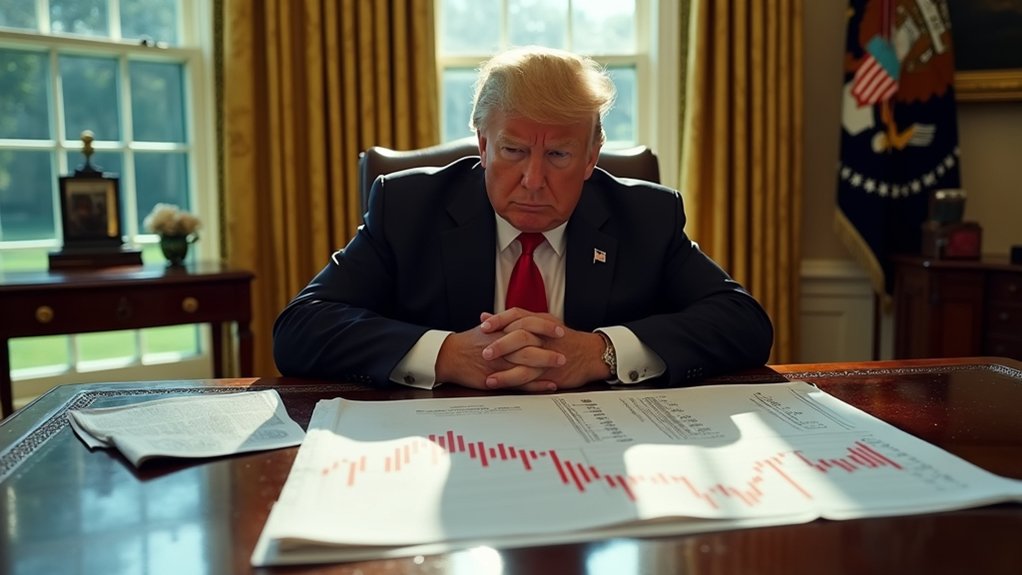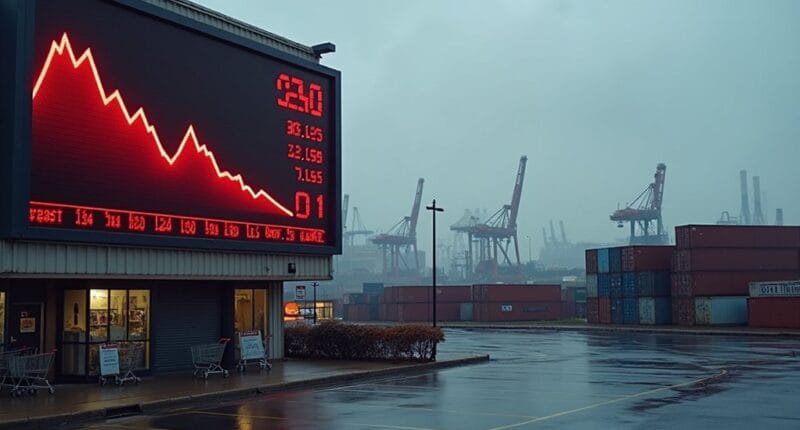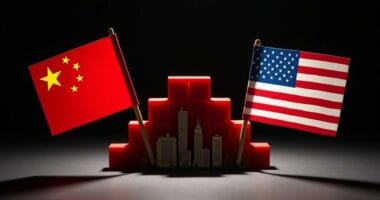President Trump’s tariff offensive backfired spectacularly, forcing an embarrassing retreat amid devastating economic fallout. Skyrocketing consumer costs and plummeting exports left U.S. businesses reeling, while retaliatory measures from Vietnam, Thailand, and even traditional allies hammered American trade. Farm markets evaporated, supply chains fractured, and retailers faced crippling inventory costs. The failed experiment cost the U.S. economy billions – and that’s just the beginning of the damage.

As mounting economic pain from his sweeping tariff offensive became impossible to ignore, former President Donald Trump abruptly reversed course on his controversial trade war. The stark reality of skyrocketing consumer costs and plummeting exports finally forced his hand, leaving his ambitious protectionist agenda in tatters.
The damage was already done. U.S. businesses had been hammered by expensive import costs, while American farmers watched helplessly as their international markets evaporated. Countries weren’t taking Trump’s tactics lying down – they hit back hard. Vietnam slapped a whopping 46% tariff on U.S. goods. Thailand and Taiwan piled on with their own punishing duties. Even traditional allies like the UK and Turkey joined the retaliation party. The losses were staggering, with counterfeit goods and theft costing the U.S. economy up to $600 billion annually.
Trump’s justification for the tariffs, citing national security threats under the International Emergency Economic Powers Act, didn’t exactly win hearts and minds abroad. His claims about currency manipulation and unfair VAT policies by trading partners fell flat. Meanwhile, the manufacturing sector he promised to rebuild was struggling more than ever with astronomical raw material costs. Major retailers like Walmart sourcing sixty percent of their inventory from China faced devastating cost increases.
The numbers told a brutal story. Global GDP forecasts tanked. Supply chains fractured. Investment dried up faster than a puddle in the Mojave. Trump’s April 2025 opening salvo – a 10% tariff on practically everything – triggered an international game of economic chicken that nobody was winning. Trading partners didn’t just get mad; they got even. And then some.
The ultimate irony? The very supply chains Trump wanted to bring home to America started packing their bags for anywhere-but-America. Countries scrambled to build new trade relationships that specifically excluded U.S. involvement. His “temporary measures” to eliminate trade disparities ended up creating bigger ones. Critics called it a strategic blunder. That might be the understatement of the decade.
Now, with consumer prices through the roof and U.S. exports in freefall, Trump’s grand tariff experiment has come to an inglorious end. Sometimes, you just have to know when to fold ’em.





